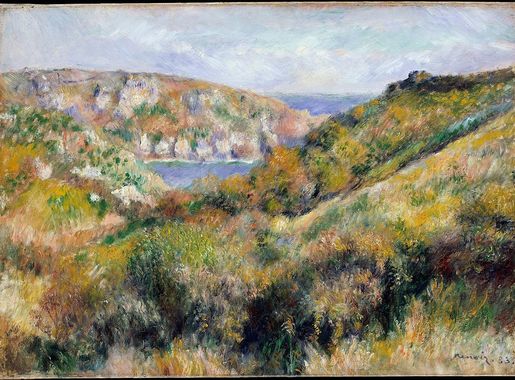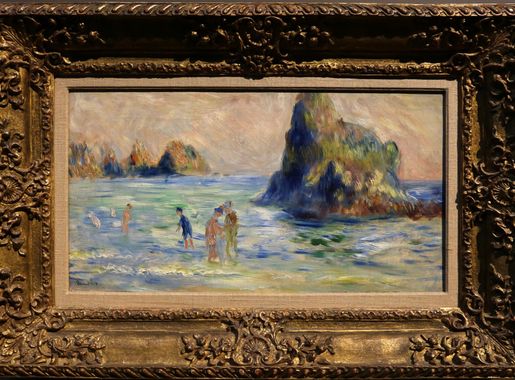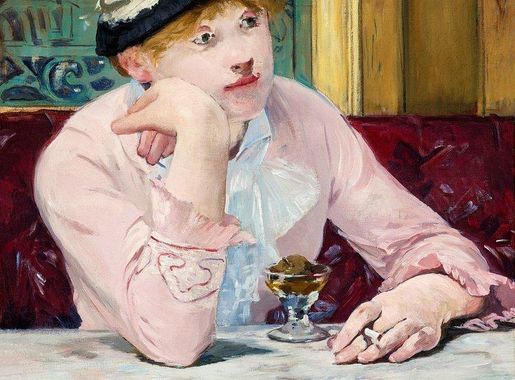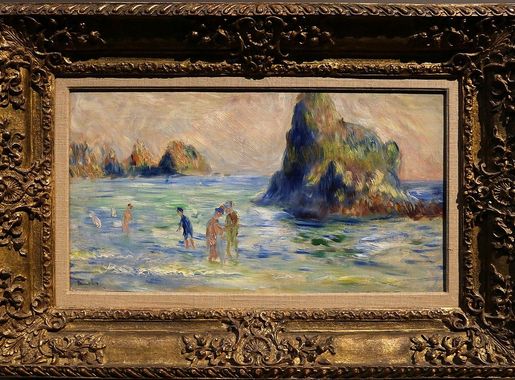
Moulin Huet Bay: Guernsey's Hidden Gem
Discover Moulin Huet Bay in Guernsey – a serene retreat with stunning scenery, historical charm, and plenty of outdoor activities to enjoy.
Moulin Huet Bay, nestled on the southern coast of Guernsey, is a picturesque retreat that has captivated artists and nature lovers for centuries. This serene bay is known for its stunning scenery, featuring crystal-clear waters, rugged cliffs, and lush greenery. The bay's tranquil atmosphere makes it the perfect spot to unwind and soak in the natural beauty. The bay is famously associated with the renowned French artist Pierre-Auguste Renoir, who painted several masterpieces inspired by its enchanting landscape. Today, you can follow the Renoir Walk, a trail that offers breathtaking views and interpretive panels about his work. As you explore the area, you'll be able to see firsthand the scenes that moved him to create such beautiful art. In addition to its artistic heritage, Moulin Huet Bay offers an array of outdoor activities. The calm waters are ideal for swimming, kayaking, and paddleboarding. For those who prefer to stay on land, the surrounding cliffs provide excellent opportunities for hiking and birdwatching. Don't forget to pack a picnic and enjoy a relaxing meal with a view of the bay's pristine shoreline.
Local tips in Moulin Huet Bay
- Visit during low tide to explore the rock pools and hidden coves.
- Bring sturdy footwear for hiking the cliffs and trails.
- Check the weather forecast before planning outdoor activities, as conditions can change quickly.
- Pack a picnic to enjoy at one of the scenic spots overlooking the bay.
- Follow the Renoir Walk for a unique blend of art and nature.
Moulin Huet Bay: Guernsey's Hidden Gem
Moulin Huet Bay, nestled on the southern coast of Guernsey, is a picturesque retreat that has captivated artists and nature lovers for centuries. This serene bay is known for its stunning scenery, featuring crystal-clear waters, rugged cliffs, and lush greenery. The bay's tranquil atmosphere makes it the perfect spot to unwind and soak in the natural beauty. The bay is famously associated with the renowned French artist Pierre-Auguste Renoir, who painted several masterpieces inspired by its enchanting landscape. Today, you can follow the Renoir Walk, a trail that offers breathtaking views and interpretive panels about his work. As you explore the area, you'll be able to see firsthand the scenes that moved him to create such beautiful art. In addition to its artistic heritage, Moulin Huet Bay offers an array of outdoor activities. The calm waters are ideal for swimming, kayaking, and paddleboarding. For those who prefer to stay on land, the surrounding cliffs provide excellent opportunities for hiking and birdwatching. Don't forget to pack a picnic and enjoy a relaxing meal with a view of the bay's pristine shoreline.
When is the best time to go to Moulin Huet Bay?
Iconic landmarks you can’t miss
Castle Cornet
Discover the majestic Castle Cornet in Guernsey, a historic fortress with breathtaking views, rich culture, and fascinating museums for every traveler.
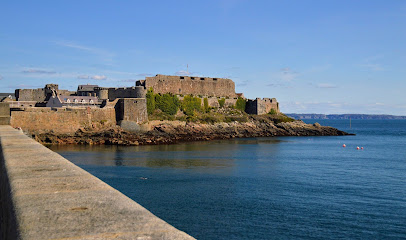
Sausmarez Manor
Explore the historic Sausmarez Manor, a captivating blend of stunning gardens, rich heritage, and cultural exhibitions in the heart of Guernsey.
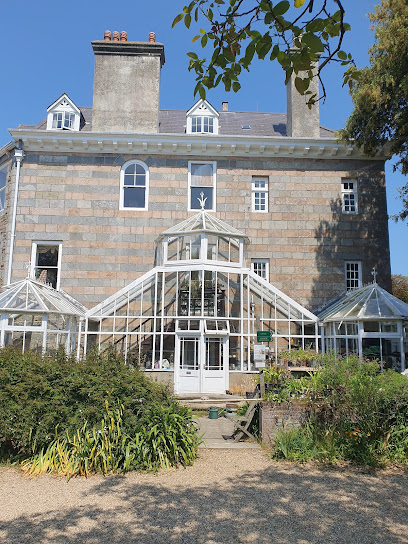
Fort Hommet
Discover the historic Fort Hommet in Guernsey, a captivating fortress with breathtaking views and rich military heritage that enchants every visitor.
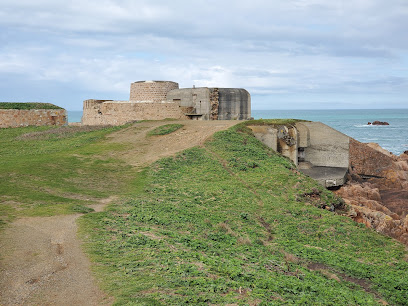
Vale Castle
Explore Vale Castle, a historical treasure in Guernsey, where medieval architecture meets breathtaking coastal views.

La Valette Underground Military Museum
Uncover the secrets of Guernsey's military history at La Valette Underground Military Museum, a captivating destination for history lovers and curious travelers.
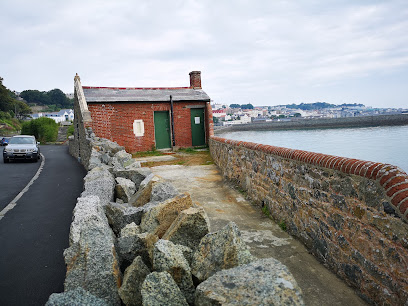
Table des Pions - Fairy Ring
Discover the captivating history and breathtaking views at Table des Pions - Fairy Ring, a historical landmark in Guernsey.
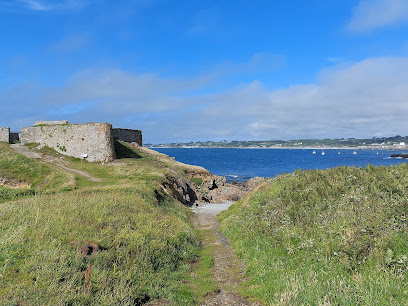
Renoir Tea Garden
Discover the tranquil Renoir Tea Garden, a serene café in Guernsey offering exquisite teas and delightful treats near the stunning Moulin Huet Bay.
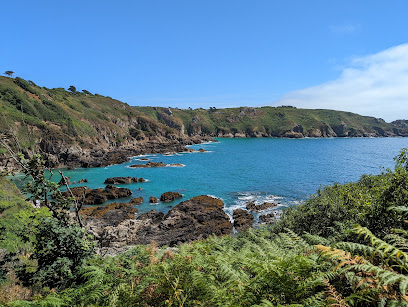
Fort Le Marchant
Explore Fort Le Marchant in Guernsey, a historic fortress with stunning views, rich military history, and beautiful landscapes perfect for all tourists.
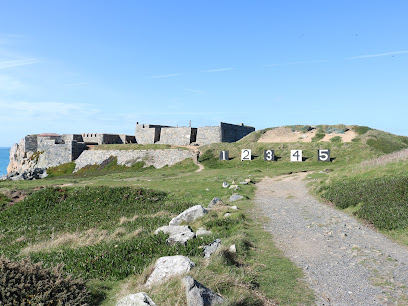
La Gran’mère du Chimquière
Explore the ancient mysteries of La Gran’mère du Chimquière, Guernsey's captivating megalithic landmark steeped in rich history and natural beauty.
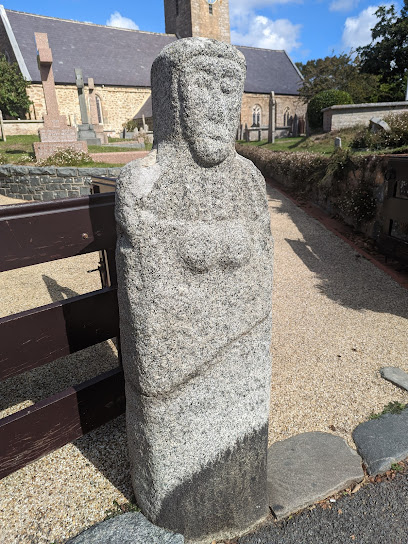
Unmissable attractions to see
Fort Le Marchant
Explore the historic Fort Le Marchant in Guernsey, a stunning fortress with panoramic views and rich military heritage.

Fort Field
Experience the breathtaking views and peaceful ambiance of Fort Field, a hidden gem in Guernsey perfect for relaxation and nature appreciation.
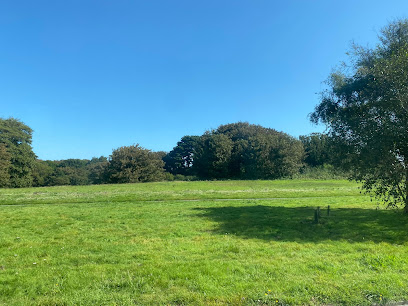
The Pat Merriman Peace Garden
Experience serenity at The Pat Merriman Peace Garden in Guernsey, a lush retreat perfect for relaxation, reflection, and photography amidst nature's beauty.
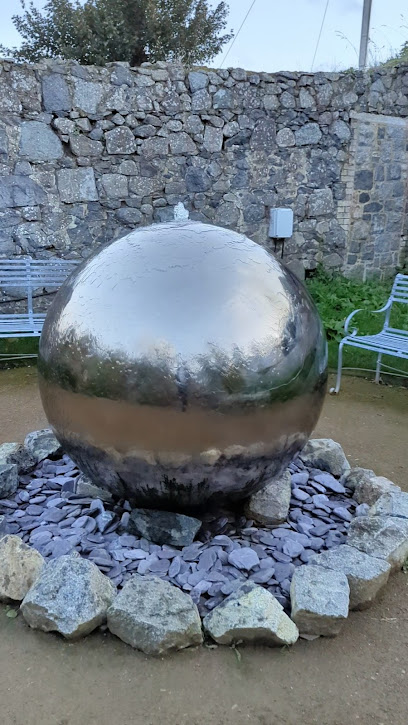
The Millennium Walk
Explore the serene Millennium Walk in Guernsey, a nature preserve that offers stunning views and a peaceful outdoor experience for every traveler.
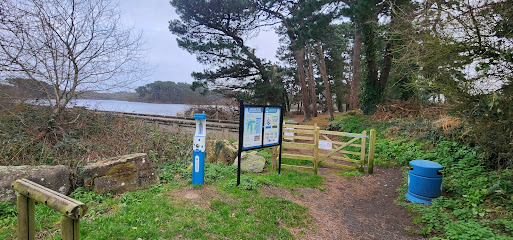
Essential places to dine
Crabby Jack's
Experience coastal dining at its finest at Crabby Jack's in Guernsey, where fresh seafood meets stunning ocean views.
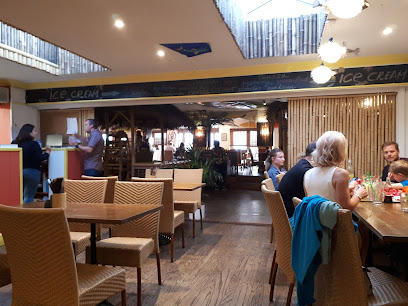
The Terrace Garden Cafe
Experience authentic Thai cuisine in a charming garden setting at The Terrace Garden Cafe - A culinary delight in Guernsey.
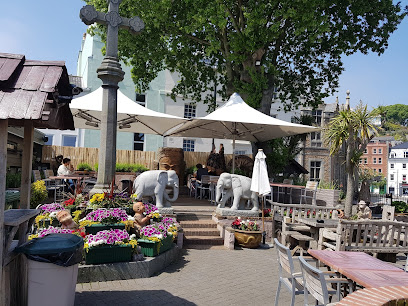
Dhaka
Experience the heart of Bangladesh in Dhaka: a vibrant city filled with rich history, delicious cuisine, and warm hospitality.
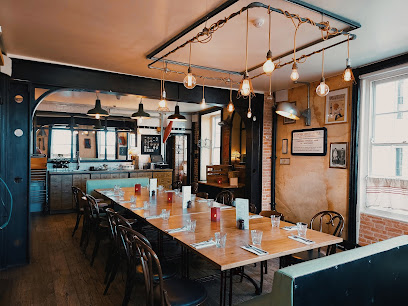
The Beach Cafe
Experience coastal dining at The Beach Cafe in Guernsey with stunning ocean views and delicious cuisine.

Fleur du Jardin
Experience the perfect blend of comfort and local flavor at Fleur du Jardin Hotel in Castel, Guernsey's hidden gem for tourists.

Le Nautique Restaurant
Experience exquisite seafood dining at Le Nautique Restaurant in St Peter Port—where fresh ingredients meet stunning harbor views.
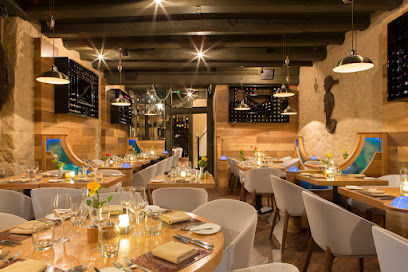
The Queens Inn - Randalls
Experience authentic Guernsey flavors at The Queens Inn - Randalls, where cozy ambiance meets exquisite cuisine for unforgettable dining.
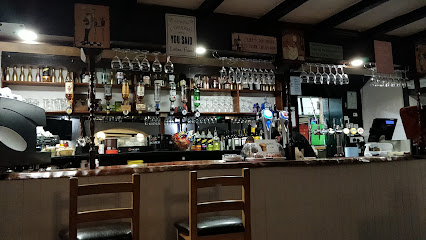
The Farmhouse
Discover tranquility at The Farmhouse in Guernsey – your perfect blend of comfort, dining excellence, and event hosting.

Hook
Discover exquisite seafood and steakhouse specialties at The Hook, Guernsey's premier dining destination for food lovers.
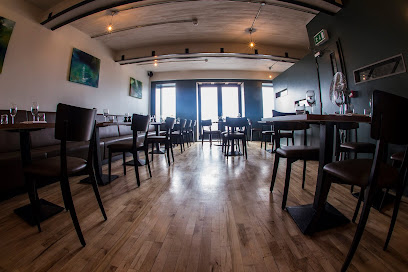
The Hook
Experience culinary excellence at The Hook in Guernsey - where fresh seafood meets exquisite flavors in a stylish setting.
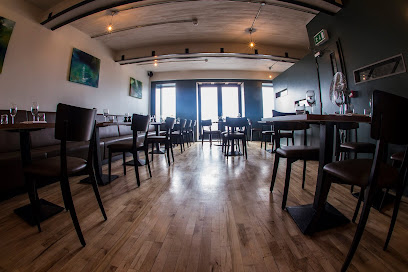
Pier 17 Restaurant
Experience exquisite seafood and stunning harbor views at Pier 17 Restaurant in Guernsey's scenic Albert Pier.
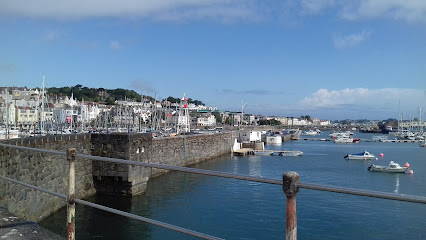
La Barbarie Hotel
Discover comfort and elegance at La Barbarie Hotel in St. Martins, Guernsey - your ideal getaway with exquisite dining and breathtaking views.

The Kiln
Discover the culinary charm of The Kiln in Oatlands Village, Guernsey – where local ingredients meet delightful flavors.
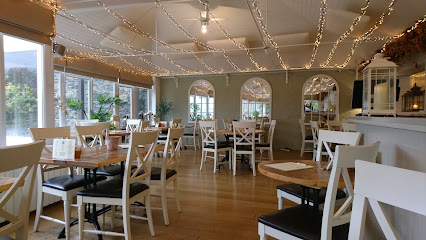
The Lobster and Grill
Experience exquisite seafood dining at The Lobster and Grill in Guernsey - where freshness meets flavor in every bite.
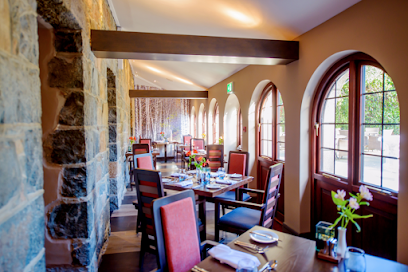
Pickled Pig
Discover exquisite local cuisine at Pickled Pig in Guernsey - a must-visit restaurant offering fresh flavors and vibrant dining experiences.
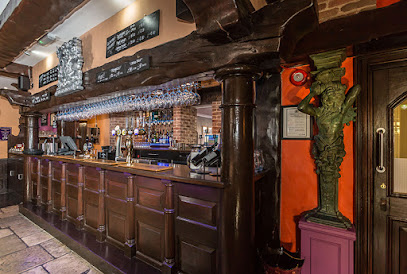
Markets, malls and hidden boutiques
Iceland Supermarket St. Martin
Explore Iceland Supermarket in St. Martin for a diverse range of grocery items, from local delights to international favorites, perfect for every traveler.
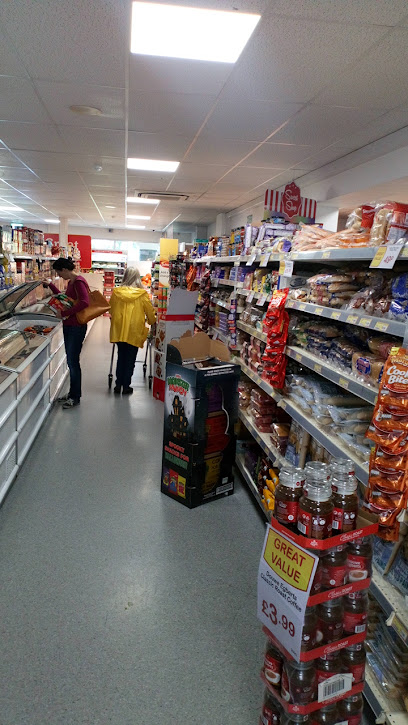
Just Games
Discover a world of gaming at Just Games in Guernsey, featuring a vast selection of video games, board games, and exclusive collectibles for every enthusiast.
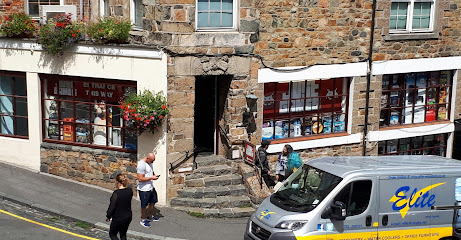
Matalan
Shop stylish apparel and unique home goods at Matalan in Guernsey, where quality meets affordability in a vibrant shopping experience.
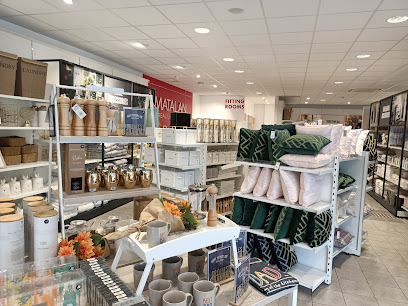
Catherine Best Ltd
Discover exquisite handcrafted jewelry at Catherine Best Ltd, a must-visit destination in Guernsey for unique designs and local craftsmanship.
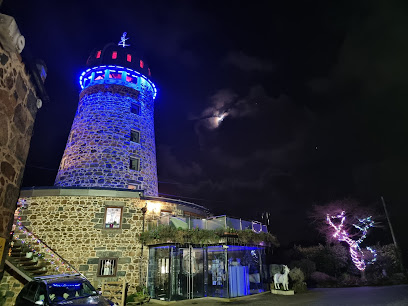
Iris & Dora Studios
Explore unique gifts and immerse yourself in creativity at Iris & Dora Studios, a vibrant art hub in Guernsey.
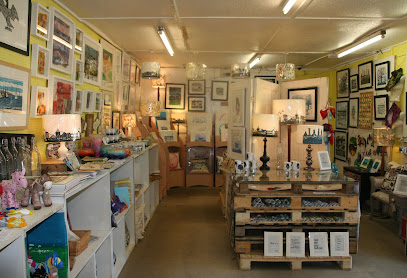
Boots
Discover Boots in Guernsey, your one-stop shop for gifts, beauty products, and health essentials, perfect for tourists seeking unique local treasures.

Mountain Warehouse Guernsey
Discover a wide range of outdoor clothing and gear at Mountain Warehouse Guernsey, your one-stop shop for adventure essentials.

Woodies
Experience the cozy charm of Woodies, Guernsey's beloved coffee shop, offering gourmet brews and delightful pastries in an inviting atmosphere.
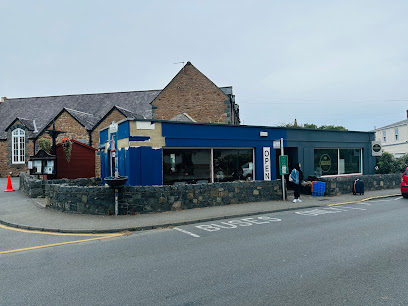
Soava Boutique
Discover unique gifts and local treasures at Soava Boutique in Guernsey, where handcrafted quality meets island charm.

Land of Green Ginger
Explore unique local fashion at the Land of Green Ginger, a charming clothing store in Guernsey's lively market setting.
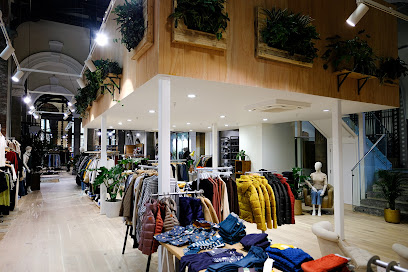
Penelope Hope
Explore Penelope Hope, Guernsey's charming home goods store - a perfect destination for unique decor and gifts.
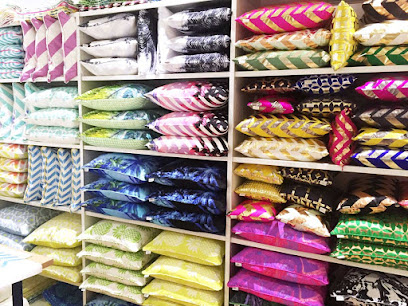
FatFace
Discover stylish and sustainable clothing at FatFace in Guernsey, where quality meets the coastal lifestyle in a trendy shopping experience.
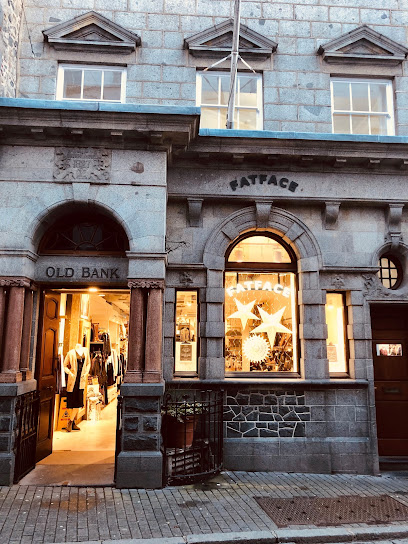
The Guernsey Shop
Discover unique local crafts and souvenirs at The Guernsey Shop, your go-to destination for authentic Guernsey treasures.
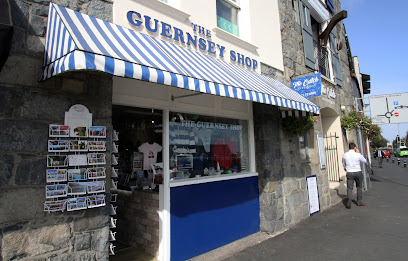
Home Comforts
Discover unique home furnishings and artisan candles at Home Comforts in St Martins, Guernsey, where local craftsmanship meets delightful shopping.
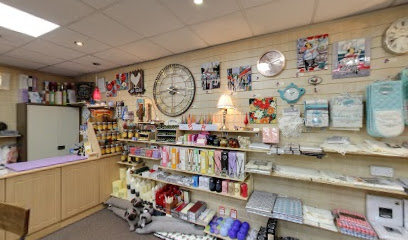
The Tuck Shop
Explore Guernsey's charm at The Tuck Shop, your go-to convenience store for local snacks and unique souvenirs along the beautiful S Esplanade.

Essential bars & hidden hideouts
Thomas De La Rue
Discover the vibrant atmosphere, delicious gastropub fare, and lively events at Thomas De La Rue in Guernsey, a must-visit for every traveler.
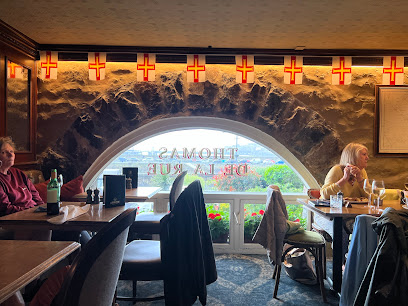
Ship & Crown
Discover the vibrant Ship & Crown in Guernsey—a perfect blend of local cuisine, refreshing drinks, and stunning coastal views for an unforgettable experience.

The Cock and Bull
Experience the vibrant atmosphere, local ales, and live music at The Cock and Bull - a quintessential Guernsey pub that brings people together.
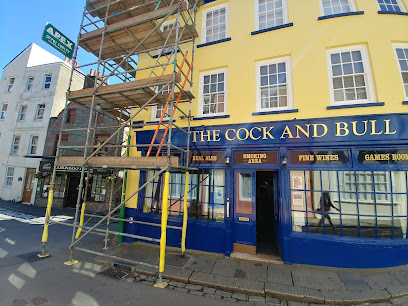
The Doghouse
Discover the vibrant atmosphere of The Doghouse in Guernsey, where delicious grill cuisine meets live music and camaraderie.
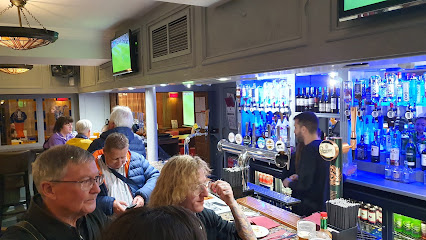
The Golden Lion
Experience the charm of Guernsey at The Golden Lion, a cozy pub with delicious local cuisine and an extensive drink selection.
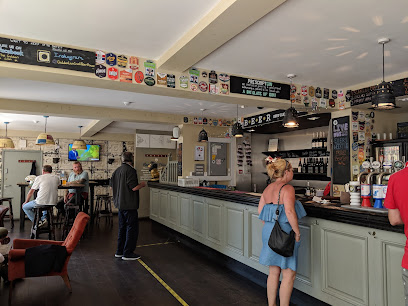
Albion House Tavern
Discover the vibrant atmosphere of Albion House Tavern in Guernsey, where hearty cuisine and local brews await in a charming pub setting.
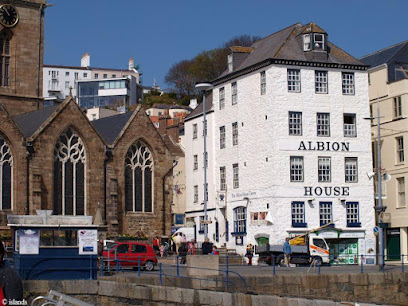
The Swan Inn
Experience the charm of Guernsey at The Swan Inn, a cozy bar offering a delightful selection of beverages in an inviting atmosphere.
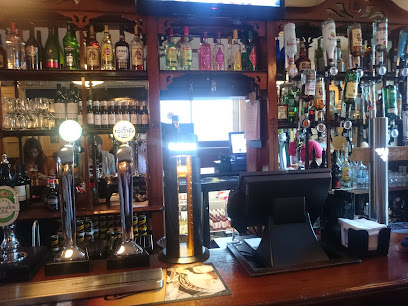
Dorset Arms
Discover the Dorset Arms Pub in Guernsey – where local flavors meet a cozy atmosphere for an unforgettable experience.

The Fermain Tavern - Randalls
Experience the local charm and coastal beauty at The Fermain Tavern, Guernsey's beloved pub offering delicious food and breathtaking views.
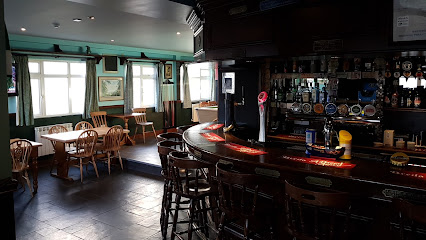
The Plough Inn
Discover the warmth of Guernsey at The Plough Inn, where delightful food, local brews, and lively atmosphere come together in a traditional pub setting.
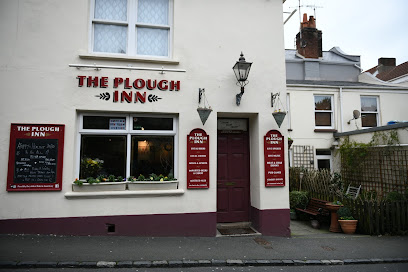
Harbour Lights
Experience the charm of St. Peter Port at Harbour Lights, a local pub offering delicious food, craft drinks, and stunning harbor views.

JB Parkers' Bar & Cellar
Experience the best of Guernsey's culinary scene at JB Parkers' Bar & Cellar, where exquisite flavors meet a vibrant atmosphere.
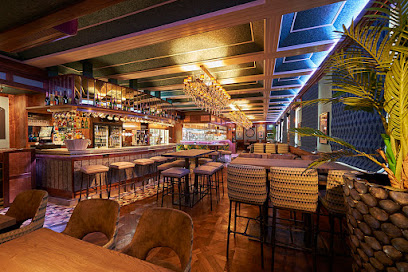
Mojito
Experience the vibrant nightlife at Mojito in Guernsey, where expertly crafted cocktails and an energetic atmosphere await.

PingQuay
Unwind at PingQuay, Guernsey's vibrant waterfront bar offering local drinks, delicious bites, and stunning views.
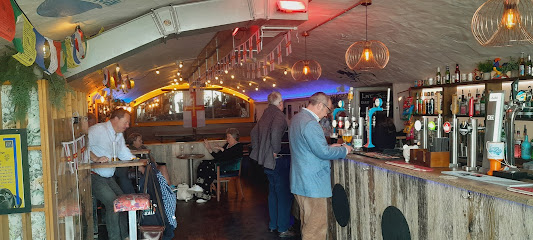
The Oak Bar
Discover the charm of The Oak Bar in Guernsey, where traditional pub culture meets a warm and inviting atmosphere, perfect for locals and tourists alike.
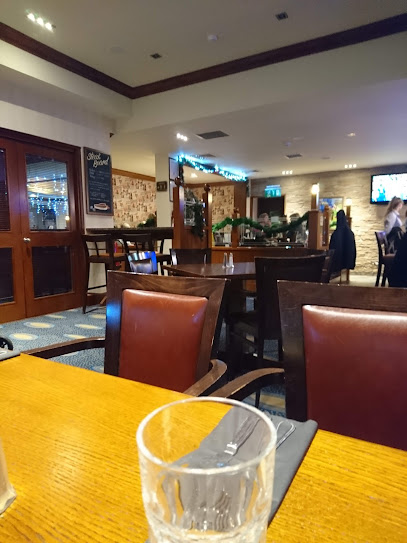
Local Phrases about Moulin Huet Bay
-
- HelloBouônjour
[Bohn-zhoor] - GoodbyeAu revoir
[Ow rev-wah] - YesOui
[Wee] - NoNon
[Non] - Please/You're welcomeS'il vous plaît
[Seel voo pleh] - Thank youMerci
[Mehr-see] - Excuse me/SorryPardon
[Pahr-dohn] - How are you?Comment ça va?
[Koh-mohn sah vah?] - Fine. And you?Bien. Et toi?
[Byen. Ay twah?] - Do you speak English?Parlez-vous anglais?
[Pahr-lay voo ahn-glay?] - I don't understandJe ne comprends pas
[Zhe nuh kohm-prahnd pah]
- HelloBouônjour
-
- I'd like to see the menu, pleaseJe voudrais voir le menu, s'il vous plaît
[Zhe voo-dray vwar luh meh-noo, seel voo pleh] - I don't eat meatJe ne mange pas de viande
[Zhe nuh mahnj pah duh vee-and] - Cheers!Santé!
[Sahn-tay] - I would like to pay, pleaseJe voudrais payer, s'il vous plaît
[Zhe voo-dray pay-yay, seel voo pleh]
- I'd like to see the menu, pleaseJe voudrais voir le menu, s'il vous plaît
-
- Help!Au secours!
[Ow seh-coor] - Go away!Allez-vous en!
[Ah-lay voo ahn] - Call the Police!Appelez la Police!
[Ah-puh-lay lah Poh-lees] - Call a doctor!Appelez un médecin!
[Ah-puh-lay uh meh-deh-sahn] - I'm lostJe suis perdu
[Zhe swee pair-doo] - I'm illJe suis malade
[Zhe swee mah-lahd]
- Help!Au secours!
-
- I'd like to buy...Je voudrais acheter...
[Zhe voo-dray ah-shet-ay] - I'm just lookingJe regarde juste
[Zhe ruh-gard zhust] - How much is it?Combien ça coûte?
[Kohm-byen sah koot?] - That's too expensiveC'est trop cher
[Say troh shay] - Can you lower the price?Pouvez-vous baisser le prix?
[Poo-veh voo bay-say luh pree?]
- I'd like to buy...Je voudrais acheter...
-
- What time is it?Quelle heure est-il?
[Kell er eh-tee?] - It's one o'clockIl est une heure
[Eel eh oon er] - Half past (10)Dix heures et demie
[Dees er et dehm-ee] - MorningMatin
[Mah-tahn] - AfternoonAprès-midi
[Ah-pray mee-dee] - EveningSoir
[Swah] - YesterdayHier
[Yehr] - TodayAujourd'hui
[Oh-zhoor-dwee] - TomorrowDemain
[Dehm-ahn] - 1Un
[Ehn] - 2Deux
[Duh] - 3Trois
[Twa] - 4Quatre
[Kat] - 5Cinq
[Sank] - 6Six
[Sees] - 7Sept
[Set] - 8Huit
[Weet] - 9Neuf
[Nuhf] - 10Dix
[Dees]
- What time is it?Quelle heure est-il?
-
- Where's a/the...?Où est...?
[Oo eh...] - What's the address?Quelle est l'adresse?
[Kell eh lahd-res] - Can you show me (on the map)?Pouvez-vous me montrer (sur la carte)?
[Poo-veh voo muh mohn-tray (sur lah kart)] - When's the next (bus)?Quand est le prochain (bus)?
[Kahnd eh luh proh-shahn (boos)] - A ticket (to ....)Un billet (pour ...)
[Ehn bee-yay (poor)]
- Where's a/the...?Où est...?
History of Moulin Huet Bay
-
Moulin Huet Bay was first settled during the Neolithic era. Archaeological finds, such as ancient tools and remnants of early dwellings, suggest that early humans found the bay to be a hospitable and strategic location. The area provided ample resources with its rich marine life and fertile soil, making it an ideal spot for early settlers.
-
During the medieval period, Moulin Huet Bay played a crucial role in the local economy and defense of Guernsey. The bay's natural harbor was used by fishermen and traders who sailed between the Channel Islands and the mainland. The rugged terrain also offered a natural defense against invaders, making it a key point of interest for the island's feudal lords.
-
In the early 19th century, Moulin Huet Bay, along with the rest of Guernsey, was significantly impacted by the Napoleonic Wars. Coastal defenses were strengthened, and the bay served as a lookout point for potential French invasions. The remnants of these fortifications can still be seen today and serve as a reminder of the island's strategic importance during that tumultuous period.
-
One of the most notable historical associations of Moulin Huet Bay is its connection to the famed French writer Victor Hugo. During his exile from France, Hugo lived in Guernsey from 1855 to 1870. He frequently visited Moulin Huet Bay, finding inspiration in its dramatic cliffs and serene waters. The bay is immortalized in several of his works and remains a testament to his enduring legacy.
-
During World War II, Guernsey was occupied by German forces, and Moulin Huet Bay was no exception. The bay was fortified with bunkers and observation points, part of the extensive Atlantic Wall defenses. These fortifications remain a poignant reminder of the island's wartime history and are a significant attraction for visitors interested in World War II history.
-
Moulin Huet Bay has long been a source of inspiration for artists and writers. The most famous of these is the painter Pierre-Auguste Renoir, who visited the bay in 1883. Renoir created several vibrant paintings capturing the bay's stunning natural beauty. Today, Moulin Huet Bay continues to inspire artists from around the world, and its picturesque landscapes are a favorite subject for photographers and painters alike.
Moulin Huet Bay Essentials
-
Moulin Huet Bay is located on the southeastern coast of Guernsey, one of the Channel Islands. The nearest airport is Guernsey Airport (GCI), which has flights from various UK and European cities. From the airport, you can take a taxi or bus to St. Peter Port, the capital of Guernsey. Moulin Huet Bay is about a 15-minute drive from St. Peter Port. Alternatively, you can take a ferry to Guernsey from the UK or France and then travel to Moulin Huet Bay via local transportation.
-
Public buses operated by CT Plus are a convenient way to travel around Guernsey, including to Moulin Huet Bay. Bus routes 11 and 12 connect St. Peter Port to Moulin Huet Bay. Taxis are also available, but it's advisable to book in advance, especially during peak tourist seasons. If you prefer more flexibility, car rentals are available at Guernsey Airport and in St. Peter Port. For a more eco-friendly option, consider renting a bicycle.
-
The official currency in Guernsey is the Guernsey Pound (GGP), which is on par with the British Pound (GBP). British Pounds are also widely accepted. Credit and debit cards are commonly used in hotels, restaurants, and shops, but it's a good idea to carry some cash for smaller establishments. ATMs are available in St. Peter Port and other larger towns.
-
Guernsey is generally very safe for tourists, including Moulin Huet Bay. However, as with any destination, it's wise to take standard precautions. Keep an eye on your belongings, especially in crowded areas. Avoid isolated areas late at night. There are no specific high-crime areas targeting tourists in Guernsey.
-
In case of emergency, dial 999 for immediate assistance. The Princess Elizabeth Hospital in St. Martin is the main medical facility on the island. For minor health issues, there are pharmacies in St. Peter Port and other towns. It's advisable to have travel insurance that covers medical emergencies. Local police stations are also available for assistance.
-
Fashion: Do dress comfortably and appropriately for outdoor activities. Wear good walking shoes for exploring the bay area. Avoid overly revealing clothing. Religion: Do respect local customs and traditions, although Guernsey is generally secular. Public Transport: Do be courteous to drivers and fellow passengers on buses. Don't play loud music or talk loudly. Greetings: Do greet locals with a friendly 'hello' or 'good day'. A handshake is also acceptable. Eating & Drinking: Do try local seafood and specialties like Guernsey Gâche. Don't leave a tip on the table; it's usually included in the bill.
-
To experience Moulin Huet Bay like a local, visit the bay during low tide to explore the rock pools and hidden caves. Pack a picnic and enjoy it on the beach or the nearby cliff paths. Engage with local artists and visit the Petite Port artist's studio for unique souvenirs. Don't miss the opportunity to hike the cliff paths for breathtaking views of the bay and the surrounding coastline.
Nearby Cities to Moulin Huet Bay
-
Things To Do in St. Andrew
-
Things To Do in Forest
-
Things To Do in St. Peter Port
-
Things To Do in Castel
-
Things To Do in St. Saviour
-
Things To Do in Vale
-
Things To Do in St. Sampson
-
Things To Do in St. Anne
-
Things To Do in St. Ouen
-
Things To Do in St. Peter
-
Things To Do in St. Brelade
-
Things To Do in St. Lawrence
-
Things To Do in St. Aubin
-
Things To Do in Trinity
-
Things To Do in St. Helier

